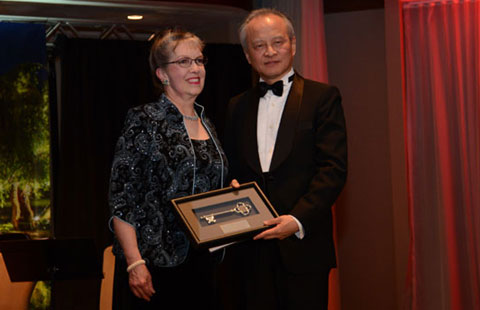Transform shantytowns to improve people’s lives
Updated: 2014-07-04 17:51
By Li Yang(chinadaily.com.cn)
|
||||||||
Transforming shantytowns should, first and foremost, improve people’s standards of living, not boost investment or acquire land. The government should ensure that these projects’ progress is not affected by the cooling property market, says an article in the 21st Century Business Herald. Excerpts:
Premier Li Keqiang has stressed several times since taking office that local governments should ensure that enough money is set aside to transform city shantytowns.
Li did a good job with this aspect when he was provincial governor in Liaoning.
The Chinese central government decided to create a national project in July 2013, and plans to move 10 million families out of their old, shabby houses by 2017, especially in the industrial cities and regions that have depleted their natural resources.
The shantytown transformation project has three main components. Low-income people can get a better living environment. By moving residents into new communities, the governments can obtain more land in the center of cities. And the projects need lots of investment, while boosting consumption and economic growth.
Local governments must know the main goal of the project is to improve poor people’s lives, not securing land or boosting investment.
To serve the main purpose well, the governments must have enough money and build enough new housing.
After China’s property market cooled down recently, it became increasingly difficult for local governments to solve the two problems.
Thus, the governments should reduce their reliance on real estate developers and divert more money to ensure that the projects are not affected by changes in the housing market. Creating more jobs in residential regions, developing service sectors and supporting facilities should make it easier for the governments to persuade residents to move out of their old houses into new places.

 Music at her fingers
Music at her fingers
 Across America Over the Week (Jan 16 - Jan 22)
Across America Over the Week (Jan 16 - Jan 22)
 Spend Chinese New Year in style
Spend Chinese New Year in style
 Ili river valley becomes a popular destination for swans
Ili river valley becomes a popular destination for swans
 Philip Ma: from scientist to businessman
Philip Ma: from scientist to businessman
 Birmingham's Spotlight on China dinner
Birmingham's Spotlight on China dinner
 How to distinguish doucai, wucai, Famille-rose and enamel porcelain
How to distinguish doucai, wucai, Famille-rose and enamel porcelain
 Xinjiang lake in bumper fishing season
Xinjiang lake in bumper fishing season
Most Viewed
Editor's Picks

|

|

|

|

|

|
Today's Top News
Houston's SW Chinatown
China to focus on reforms, opening of capital market
Slowdown brings new risks to banks
Trade group calls for BIT
Market status for China is 'political' issue
Birmingham's Spotlight on China dinner
Bank takes renminbi-clearing seriously
Traditional Garb
US Weekly

|

|







